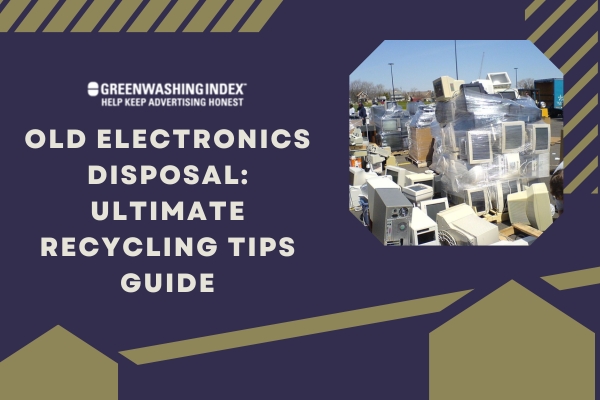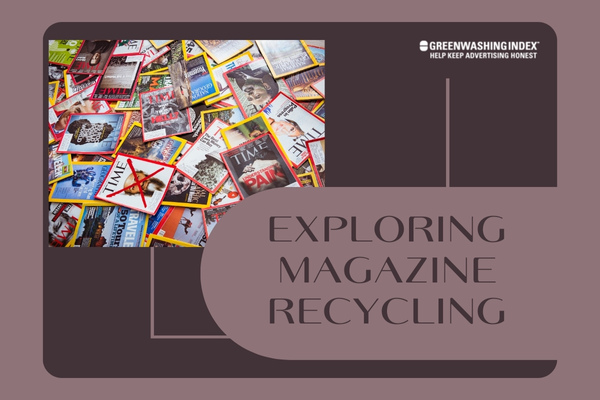Have you ever wondered what to do with your old gadgets that are just gathering dust in the drawers? I’m here to talk about old electronics disposal and why it’s so vital not only for tidying up your space but also for our planet. Imagine one smartphone; now multiply that by millions – that’s a mountain of waste we can’t ignore! Stick around, and I’ll show you how easy it can be to make a real difference.
What should you do with those phones, computers, or TVs that have reached the end of their life? Don’t throw them in the trash! Instead, recycling them properly keeps harmful materials out of landfills and recovers valuable resources. It’s a win-win: You declutter your home while being kind to Mother Earth. Ready to learn more? Perfect – let’s dive into the world of responsible e-waste management together!
What You Will Learn Here:
- Detect the best ways to dispose of outdated devices.
- Uncover eco-friendly methods for electronics recycling.
- Understand federal laws on e-waste management.
- Discover manufacturer take-back programs for old gadgets.
- Find local e-waste solutions right in your community.
Electronics Recycling: A Step Towards Sustainable Future
Electronics recycling, something we hear about more and more, is a smart way to deal with our old gadgets. As tech keeps changing fast, we end up with lots of outdated stuff. The right way to get rid of these things is what we call electronics recycling.
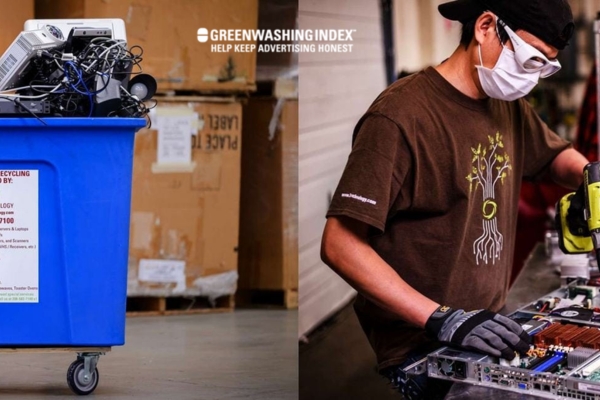
What Is Electronics Recycling?
Electronics recycling is a process where I take old, unused, or broken electronic devices and give them new life. It’s like finding hidden treasures in things most folks would throw away.
In our homes and offices, we often have a bunch of these old gadgets – from outdated phones to last year’s computer models. When their time is up, instead of tossing them in the trash, electronics recycling lets us handle them the right way.
Why is it so important? Well, inside every gadget, there are precious materials – metals like gold and copper can be found and reused. Then there are parts that could harm the environment if they end up in a landfill somewhere. By recycling this e-waste properly, I make sure I’m not wasting anything useful or hurting Mother Nature.
The Environmental Impact of E-Waste
Now let me paint you a picture of what happens when electronics aren’t disposed of responsibly:
First off, electronic waste—to put its fancy name to use, e-waste—is growing super-fast because people buy more tech stuff than ever before. The problem? Most of this ends up dumped in places that can’t handle it safely.
Here are some major issues caused by improper old electronics disposal:
- Harmful chemicals such as lead or mercury can leak into the ground. This is bad for plants and animals around that area.
- If e-waste burns (which sometimes happens), toxic fumes get released into the air we breathe!
- Precious metals that could be reused are wasted if those gadgets aren’t recycled.
When I recycle my old devices responsibly through proper electronics recycling, here’s how it helps our blue planet stay green:
- Less pollution goes into the air since fewer toxic materials are burned.
- Beautiful rivers and streams stay cleaner because nasty chemicals don’t get washed into them.
- Wildlife stays safer since their homes aren’t trashed with harmful materials.
- We save energy because creating new stuff with recycled materials uses less power than starting from scratch.
So you see when dealing with outdated devices correctly, in a way that’s good for Mother Earth, I ensure less harm all around. That’s what I call eco-friendly electronics recycling and every little bit counts!
Legal Aspects of Electronics Disposal
When the time comes to say goodbye to our old gadgets, it’s important we do it the right way. Throwing away old electronics isn’t just bad for the environment; it can also break the law. Here’s a breakdown of what you need to know about properly getting rid of your outdated devices.
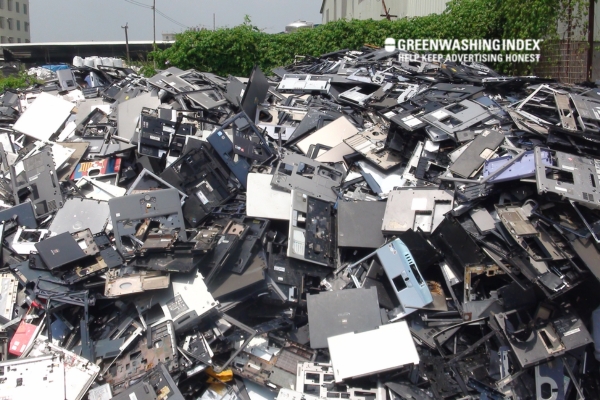
Federal and State Laws Governing E-Waste
Both federal and state laws play a part in how we should handle old electronics disposal. These laws make sure that e-waste is taken care of without harming people or our planet.
Federal rules talk about how dangerous stuff inside electronics must be handled with care. There’s a law called the Resource Conservation and Recovery Act (RCRA), which says you can’t throw away certain electronic parts because they could be harmful.
Then, there are state laws, which can vary quite a bit depending on where you live. Some states have stricter rules on how to get rid of old electronics responsibly. States like California, New York, and Illinois have electronic recycling programs that require people and companies to recycle things like TVs, computers, and cell phones properly.
To follow these laws:
- Check your state’s guidelines for electronics recycling.
- Find out if there are any special drop-off spots for your old devices.
- Sometimes manufacturers offer take-back programs where they will recycle the product for you.
- Certain areas might even pick up your e-waste right from your home.
Remembering this will help make sure that you’re following both federal and state rules when disposing of your technology in an eco-friendly way.
The Consequences of Illegal Dumping
If someone chooses not to follow these laws on proper old electronics disposal and just dumps stuff wherever they want, there could be some serious consequences:
- Fines: Getting caught tossing out e-waste illegally might mean having to pay big bucks as a punishment.
- Legal Trouble: In some cases, if it’s really serious or happens a lot, people could face court charges beyond just fines.
- Environmental Damage Responsibility: You could also end up being held accountable for any harm done to nature because of illegal dumping.
It’s not worth taking risks when disposing of outdated devices in this manner can come back to hurt both one’s wallet and record; eco-friendly options save money legally without causing unintended environmental damage.
By keeping these points in mind when dealing with old gadgets—like making sure e-waste management is done right—you ensure everything from laptops to phones gets recycled properly according to responsible electronic disposal practices!
Also Read: DIY Composting Toilet Guide: Build Cheap, Eco-Friendly Now!
How to Recycle Your Old Electronics Correctly?
When it comes to old electronics disposal, the process can be a little tricky. I understand that you might not know where to start, but don’t worry; I’ll walk you through how to recycle your old electronics the right way.
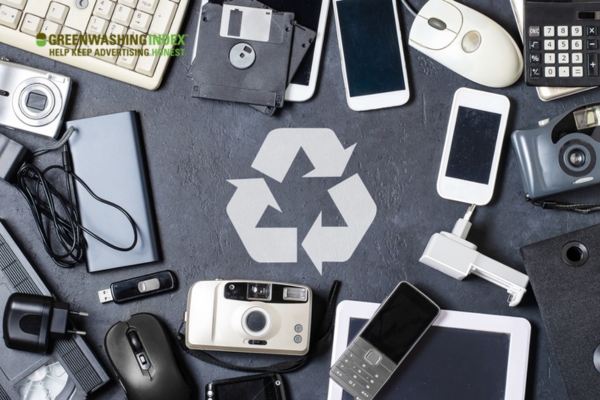
Sorting Out Your Electronic Waste
First things first: sorting out your electronic waste (e-waste). E-waste is any discarded product with a cord or battery. The good thing is that many of these items can be recycled or reused if you handle them properly. Let’s break down sorting into simple steps:
- Make a Pile: Start by gathering all your outdated or broken electronic devices in one spot.
- Assess Functionality: Check each device to see if it still works. If something is still usable, consider donating it rather than recycling it.
- Separate Batteries and Cords: Remove any batteries since they need special handling. Keep cords and chargers together; sometimes, these can be used even if the main device can’t.
- Organize by Type:
- Small Electronics: Items like phones, tablets, and cameras.
- Large Appliances: Think of refrigerators and washing machines.
- Computers and Accessories: This includes laptops, desktops, monitors, keyboards, and mice.
- Look Up Information Tags: See if there are tags with symbols indicating that the material is recyclable or containing instructions on how to get rid of it.
Once everything is sorted out clearly by category and functionally assessed for reuse or recycling potentiality – congratulate yourself! You’ve taken a big step towards responsible electronic disposal!
Options for Responsible Disposal
After sorting out your e-waste, the part about finding options for responsible disposal comes. There are various ways you can say goodbye to those old gadgets while being kind to Mother Earth.
- Drop-off Centers: Many cities have specific spots where you can take your electronics for recycling.
- Find Your Local Center: A quick search online should point you toward nearby locations.
- Prepare Your Devices: Make sure they’re sorted as per local center requirements—some might ask for devices without batteries, for example.
- Pickup Services: If hauling your old TV seems daunting — some services will come right to your doorstep!
- Schedule a Pickup: This usually involves going online or giving them a call.
- Pack Up Your Gadgets Properly: Secure them so they won’t get damaged on their way – remember eco-friendly materials here!
- Mail-In Options: Small gadgets like phones can often be mailed in for recycling.
- Find a Mail-In Program Online
- Look up “electronic mail-in recycle programs,” followed by your country’s name.
- Read Reviews: Make sure others have had good experiences with this program before sending off your precious (yet old) tech toys.
- Check For Pre-Paid Labels: Some companies help cover shipping costs as an incentive.
- Find a Mail-In Program Online
By considering these methods of proper electronics recycling practices such as e-waste management or eco-friendly electronics recycling — we ensure our love for tech does not harm the environment any further.
Alright! I hope those tips help make old electronics disposal less daunting for you now – remember, every bit helps make our planet greener!
Also Read: Computer Recycling: Green Guide to Old Tech Disposal
Certified E-Waste Recycling Centers And Their Role
When it comes to old electronics disposal, finding the right place where they will be taken care of responsibly is crucial. I think certified e-waste recycling centers are the best option for this job. These places have special certifications that show they follow strict rules to protect our planet when they recycle electronics.
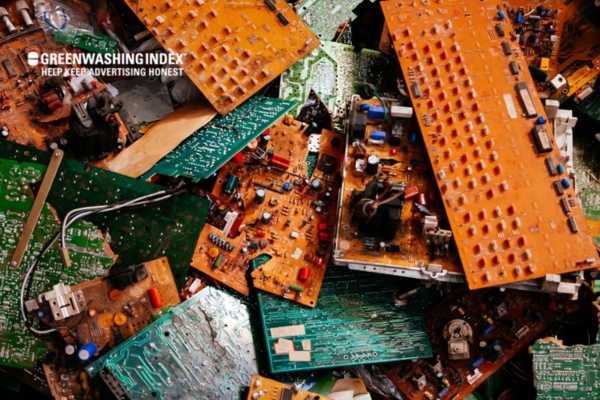
Ensuring Responsible Handling And Processing
So why do these certifications matter? Well, two well-known ones are called R2 and e-Stewards. They make sure recycling centers handle all those old phones, computers, and other gadgets the right way.
With an R2 or e-Stewards certification, a recycling center must prove they’re doing good things, like keeping harmful stuff out of landfills and taking apart electronics in ways that don’t hurt the earth.
You see, these gadgets are full of materials that can either be used again or can harm nature if just tossed away carelessly. Certifications like these mean a lot because they ensure people at the centers know exactly how to deal with each part of your old device in an eco-friendly way—like how to safely take out batteries or deal with those tricky chemicals inside screens.
And it’s not just about being kind to nature; it’s also about trust. When I drop off my outdated phone at one of these centers, I trust them to be honest and skilled at their work so that my gadget doesn’t end up causing harm somewhere else. In short, these certifications promise that responsible electronic disposal is taken seriously.
Data Destruction Standards
Now, let’s talk data—your personal stuff on your devices! Before a center even starts separating parts for recycling, there’s something super important they need to do: get rid of all your data properly. This means wiping clean all your photos and messages – everything personally stored on your device before it’s recycled.
The method to destroy this data must be thorough because if it’s not done right, someone might recover sensitive information, which nobody wants! The certified places have rules for how to delete data safely (like using software that really cleans everything or physically destroying storage parts), ensuring no piece of information is left behind.
It’s serious business – imagine someone getting their hands on your private details! So whether it’s smashing hard drives into tiny bits you’d never recognize or using advanced software tricks to make sure nothing can ever be found again—the goal is always clear: keep personal info safe during electronics recycling.
In essence, when talking about eco-friendly electronics recycling and disposing of outdated devices responsibly, certified e-waste recyclers play a huge role in making sure the whole process meets high standards for both environmental safety and protecting our personal data.
Exploring Brand-Specific Take-Back Programs
When we talk about getting rid of old gadgets, there’s something I’ve learned that makes a big difference: brand-specific take-back programs. These programs play a huge part in the proper ‘electronics recycling’ process. Instead of just throwing away our old phones or computers, there’s a smarter way to do things, and it respects the environment too.

Manufacturer Initiative Drives Towards E-Waste Reductions
Big companies that make electronics are doing something really important. They start these take-back programs which help cut down on electronic waste, or e-waste, as you might have heard it called. Now let me break this down for you nice and simple:
Firstly, when we buy a phone or laptop from a brand, they often have an option for us to give the product back to them when we don’t want it anymore. Think of this as giving your old toys back to the toy maker so they can make them into something new.
What these brands do with our old electronics:
- Safety check: They first make sure everything is safe, and no dangerous parts are going to harm anyone.
- Recycle: They take apart the old device and pull out parts that can be used again.
- Proper disposal: For whatever can’t be recycled, they dispose of it in ways that don’t hurt our planet.
This is great because we don’t have to worry about where our electronics end up after we’re done with them — if they’ll pollute the water or harm animals. The brands take care of all that.
Some famous tech giants encourage customers to drop off their unwanted items at stores or even send them by mail. It’s like when you finish your drink and put the bottle in a recycling bin – same idea but for your gadget.
Here’s how these initiatives by electronic giants work:
- Collection: They set up places where you can leave your device, often right where you bought it.
- Special Events: Sometimes, these companies run special days where they collect loads more stuff all at one go.
- Rewards: To give us an extra little push to recycle properly, some brands offer discounts on new products if we bring in our old ones.
Manufacturer initiatives drive towards e-waste reductions because every little bit helps keep our world clean and green while also making new stuff from the old.
It’s quite smart if you think about it – big companies making sure their products don’t mess up nature once people are done with them (responsible electronic disposal). This not only helps reduce trash but also shows how tech can be sustainable (sustainable technology disposal).
If everyone starts doing this with their outdated devices, like TVs, phones, or batteries (dispose of outdated devices), imagine how much cleaner things could be!
By using brand-specific take-back programs for ‘electronics recycling’, ‘old electronics disposal’ doesn’t just become safer; it becomes part of saving our planet! That’s something worth being part of — Wouldn’t you agree?
Local Solutions To Global E-Waste Challenges
In today’s world, we all use a lot of gadgets and gizmos. Think about the phones, computers, and TVs that we have replaced over the years. When these things get old or break, they become what is called e-waste.
This is a big problem for our planet because old electronics can harm the environment if they are not thrown away properly. But do you know that there are local ways to deal with this e-waste challenge? Let me share some details about these.
Community-Level Programs For Wider Access
Our communities are stepping up to tackle the issue of old electronics disposal by setting up programs that make it easy for people like you and me to recycle our unused devices responsibly.
Firstly, curbside pickup services are becoming more and more common. This is how they work:
- A special day is chosen by your city or town when you can put your old electronics out by the curb in front of your house.
- A truck comes around on that day to collect them.
- These trucks then take all the collected items to a place where they can be recycled in an eco-friendly way.
It’s as simple as putting out your trash! Just keep an eye on your local waste management schedule or website for specific dates.
Secondly, many communities have designated drop-off days for electronics recycling; this usually looks like:
- You find out when and where this drop-off day will happen—it’s often at a parking lot or similar open space.
- You take your outdated devices there.
- Volunteers or workers help collect these items from you.
- Then, those items head off to be recycled properly.
These drop-off events help bring neighbors together and spread awareness about responsible electronic disposal while handling e-waste effectively.
So next time you need to dispose of outdated devices, remember these community programs—they’re helping us keep technology sustainable while protecting our planet! And don’t forget: whenever possible, go for “electronics recycling” as your first choice—it’s good for us and good for nature too!
FAQs
How can I find an authorized electronics recycler near me?
You can search online for certified e-waste recyclers or use local government resources to find a nearby center. Look for one that follows responsible electronic disposal practices.
Are there any items that cannot be recycled through usual e-waste programs?
Yes, some items like smoke detectors and older models of CRT monitors often require special handling. Check with your recycler for item-specific guidance.
Can I recycle my old smartphone batteries safely?
Absolutely. Many electronics recyclers accept smartphone batteries for safe recycling. Be sure to tape over the battery contacts before giving them in to prevent any mishaps.
What should I do with my old cables and chargers?
Old cables and chargers can usually be recycled along with other electronics, but check if they need to be separated from devices first. Your local recycling center will have more information on how to properly dispose of these items.
Conclusion
Taking everything into account, responsible old electronics disposal and recycling are significant steps toward sustaining our environment. We are now more aware of the harmful consequences that tossing our devices carelessly can bring about, not only to nature but also to our legal standing. Learning about the weight of this issue has empowered us with the means for proper e-waste management.
By understanding and executing eco-friendly electronics recycling methods, we can contribute to reducing environmental damage and conserving resources. Moreover, engaging with certified recycling centers guarantees safe processing while maintaining data security—a critical aspect in today’s digital era. Brand-specific take-back programs further simplify sustainable technology disposal, aligning company practices with consumer convenience.
Finally, at the community level, localized measures play an invaluable role in providing accessible avenues for electronic waste handling. All these components work together to create a comprehensive approach toward a cleaner, greener future.

